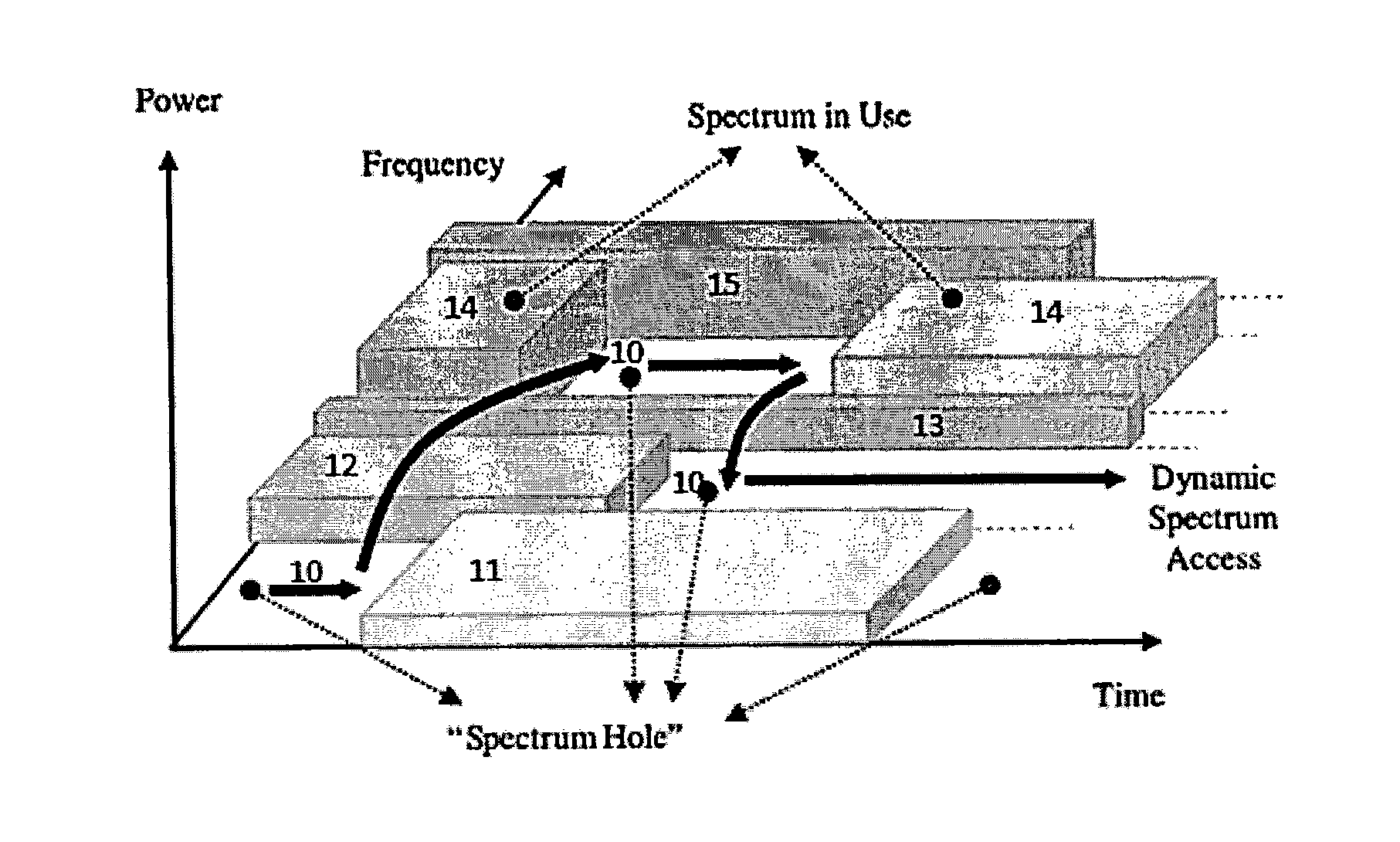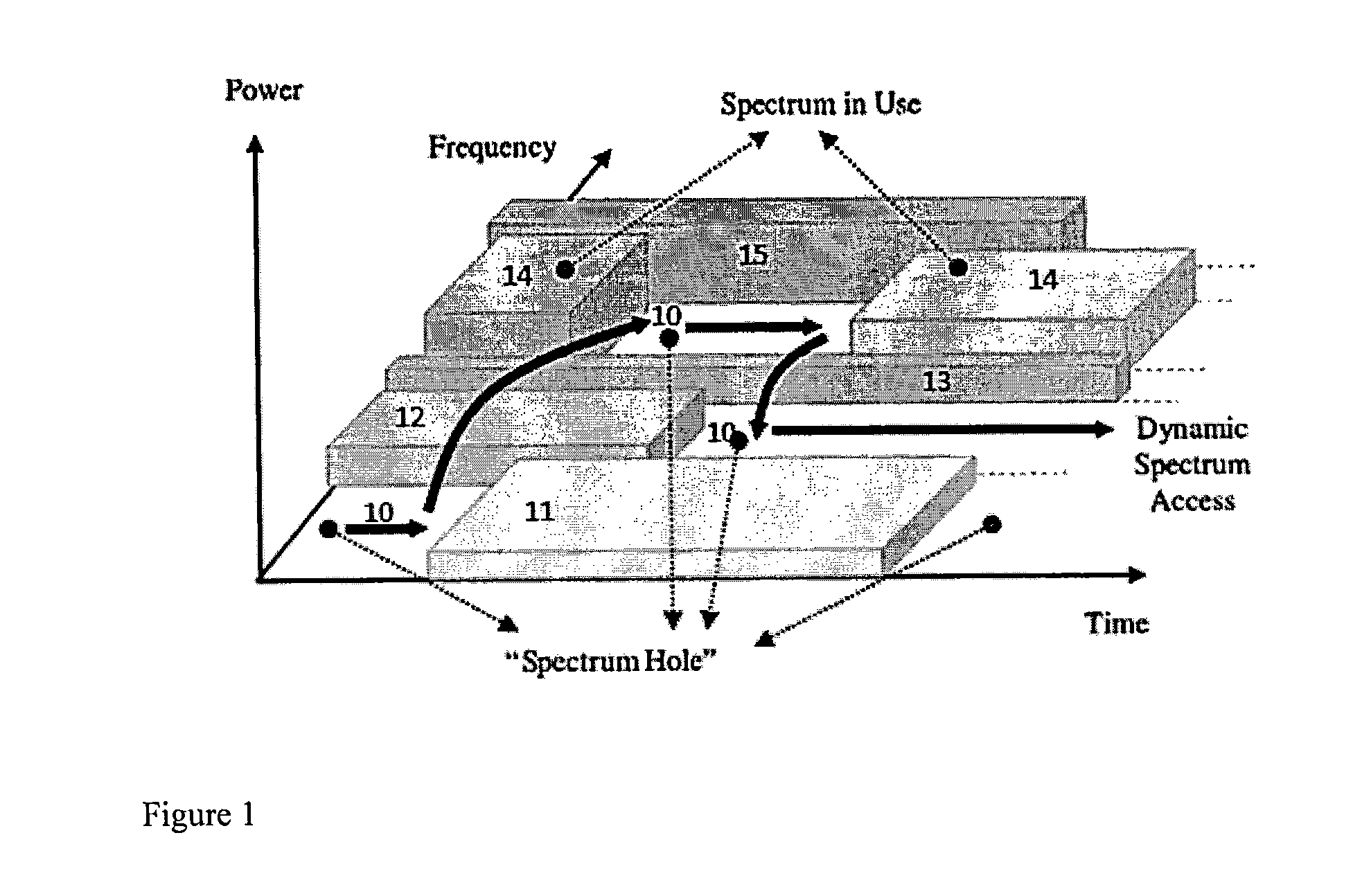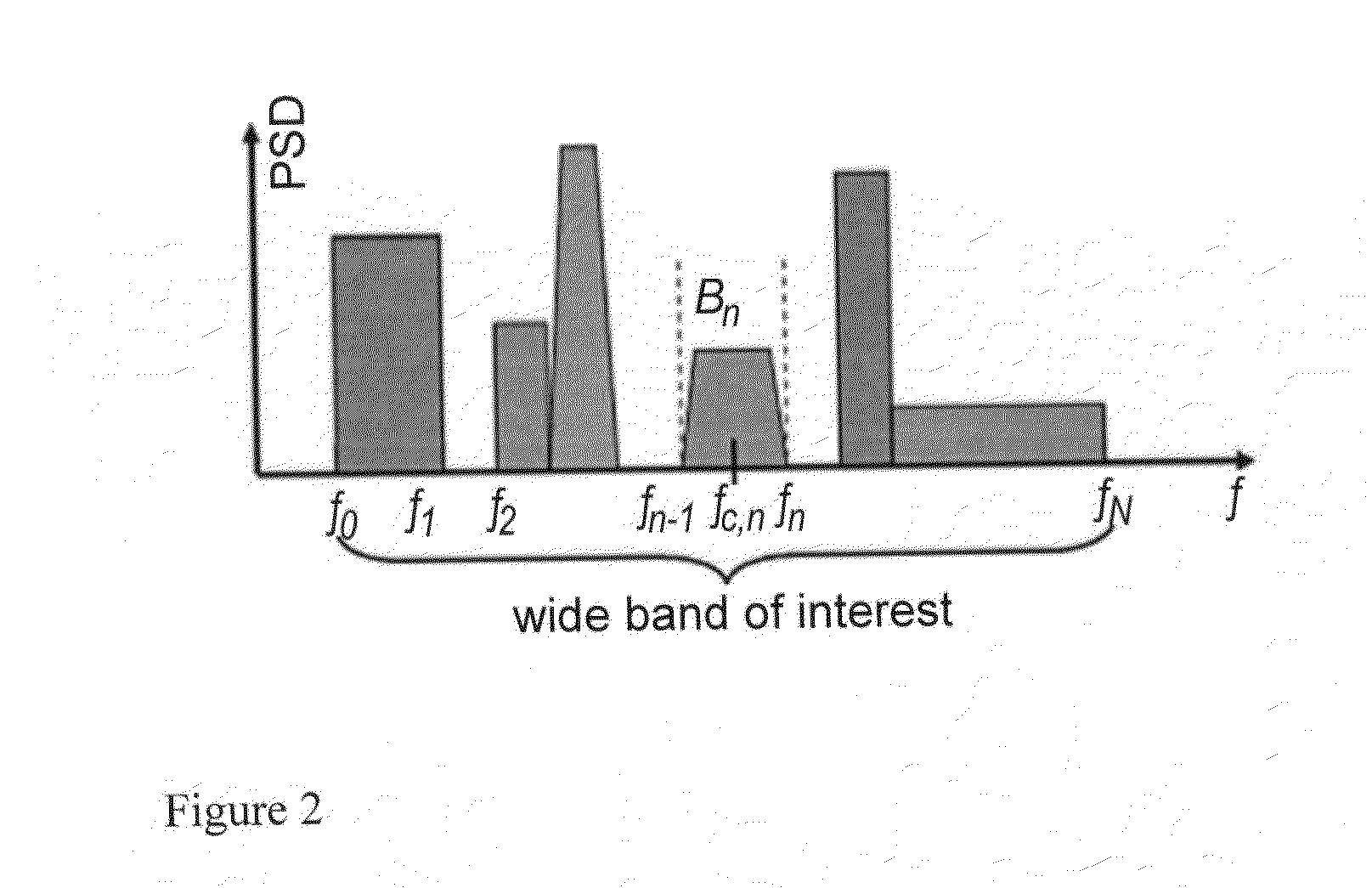Cognitive radio spectrum sensing with improved edge detection of frequency bands
a cognitive radio and spectrum sensing technology, applied in the field of cognitive radios, can solve the problems of society at the verge of spectrum unavailability for new wireless systems, scarce spectrum for wireless communication, and difficult spectrum sensing tasks for cognitive radio, so as to reduce noise, improve the method of identifying subband edges, and suppress the effect of nois
- Summary
- Abstract
- Description
- Claims
- Application Information
AI Technical Summary
Benefits of technology
Problems solved by technology
Method used
Image
Examples
Embodiment Construction
[0107]Referring now to the drawings, wherein like reference numerals designate identical or corresponding parts throughout the several views.
[0108]The present invention provides an improved method for accurate and robust spectrum sensing to enable efficient usage of spectrum in an environment of bandwidth scarcity. Cognitive radio deals with opportunistic bandwidth usage in an environment where licensed primary users (PUs) do not always use their allocated bandwidth. The cognitive radio user (CR) requires robust and accurate spectrum sensing methods to detect spectrum holes that can be used by the CR while a PU is inactive. False positive identification of spectrum holes leads to the CR transmitting at the same frequency and potentially interfering with a PU, while missed detection of spectrum holes results in lost opportunities for wireless communication. The improved method for spectrum sensing includes a robust frequency-domain method of detecting frequency bands in the absence o...
PUM
 Login to View More
Login to View More Abstract
Description
Claims
Application Information
 Login to View More
Login to View More - R&D
- Intellectual Property
- Life Sciences
- Materials
- Tech Scout
- Unparalleled Data Quality
- Higher Quality Content
- 60% Fewer Hallucinations
Browse by: Latest US Patents, China's latest patents, Technical Efficacy Thesaurus, Application Domain, Technology Topic, Popular Technical Reports.
© 2025 PatSnap. All rights reserved.Legal|Privacy policy|Modern Slavery Act Transparency Statement|Sitemap|About US| Contact US: help@patsnap.com



